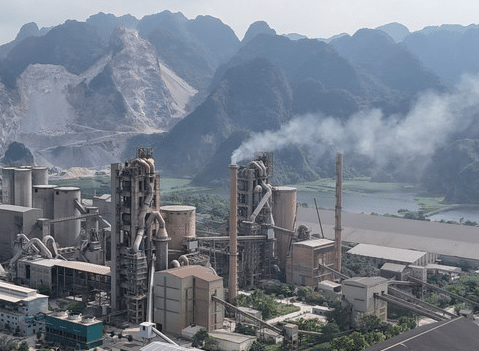
The Ministry of Agriculture and Environment has requested provincial and municipal authorities to prioritise the elimination of mining activities that affect habitats of endangered species, while also improving environmental restoration efforts at closed or soon-to-close mine sites.
In Dispatch No 5212/BNNMT-ĐCKS, the ministry emphasised the importance of strict monitoring and integration of biodiversity conservation and mineral resource protection into provincial planning, particularly in light of recent public concerns over mining impacts, as highlighted in media reports.
A recent five-part investigative series titled Shaping Conservation Spaces: A Vital Mandate and Responsibility for the Future, published by VietnamPlus between July 29 and 31, spotlighted the environmental consequences of prolonged rock blasting, cement production, and material transportation, particularly in Kim Bảng and Thanh Liêm (formerly Hà Nam Province, now part of Ninh Bình). These activities have caused pollution and disrupted the lives of thousands of local residents.
More seriously, such operations have been damaging to Việt Nam’s rich biodiversity, including rare and endemic species. One notable example is the white-shanked douc langur, a species endemic to Việt Nam and considered one of the world’s 25 most critically endangered primates.
In light of these threats and the recent enforcement of the 2024 Law on Geology and Minerals, Deputy Minister Trần Quý Kiên signed the directive urging local authorities to step up management of mining activities, particularly in areas where ecosystems are vulnerable.
The ministry called on local governments to review and update provincial land-use and construction material supply-demand plans to avoid over-extraction and environmental degradation; intensify monitoring of actual mineral outputs to prevent fraud and resource losses; remove mining zones that negatively impact habitats of endangered species and restore ecosystems around former mining sites; strengthen environmental impact assessment procedures and enforce post-mining restoration obligations; handle legal inconsistencies and promptly address media-reported violations.
Specifically, the ministry instructed provincial departments of Agriculture and Environment to lead inspections of all local mineral extraction and processing projects. Any project deemed unsafe, polluting, or using outdated and wasteful technology must be required to submit a plan for upgrading its operations.
If such upgrades are not implemented, provincial authorities are encouraged to recommend terminating the projects and revoking their investment registration certificates or investment approval decisions in accordance with laws on investment and environmental protection.
For mining licences that include provisions for mineral processing at specific sites, but where no such facilities have been established, localities must investigate and propose appropriate remedies.
In cases beyond local jurisdiction, provinces are expected to compile reports and send them to the ministries of Agriculture and Environment, Industry and Trade, and Construction and the Prime Minister for further direction.
To ensure effective implementation of the 2024 Law on Geology and Minerals, the ministry also urged localities to direct their departments of Agriculture and Environment to study relevant laws, decrees, and circulars, and guide stakeholders in fulfilling their rights and obligations in mineral activities.
The dispatch was also sent to the Prime Minister and Deputy Prime Minister Trần Hồng Hà, as well as the Government Office and relevant ministries including National Defence, Public Security, Construction, Industry and Trade, Finance, and Justice for coordination.
(VNS)




